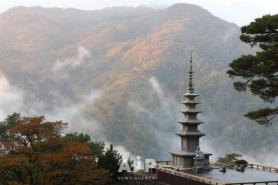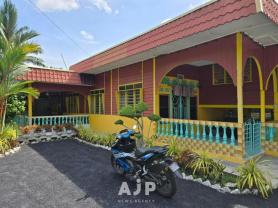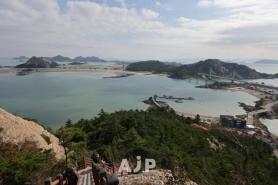
DAMYANG, Jul. 30 (AJP) – As a relentless heat wave continues to grip the Korean Peninsula, tree shade has become more precious than ever. In the face of soaring temperatures higher than those in many Southeast Asian cities, the cool calm of a forest is more than a luxury — it is a refuge. And few places offer it as gracefully as Damyang.
With its soaring bamboo groves, 300-year-old elm-lined levees, and the iconic Metasequoia-lined road, Damyang in South Jeolla Province is home to some of Korea's most exquisite green spaces. Here, you will find Juknokwon, Korea’s largest bamboo forest trail, Gwanbangjerim, a riverside forest planted centuries ago, and the Metasequoia Road — all within walking distance of each other in the town center.

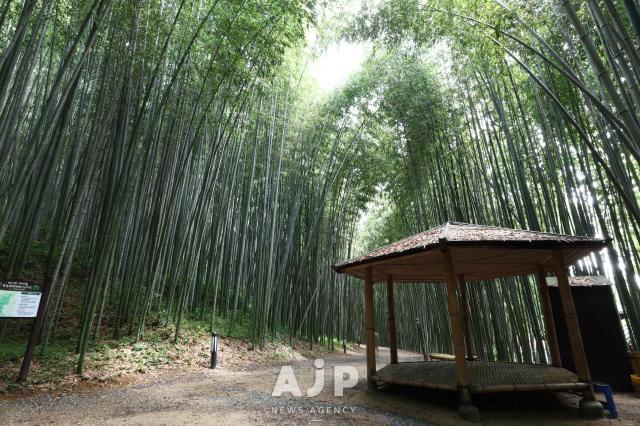
◇Juknokwon
Entering Juknokwon at midday, the difference is instant. Towering bamboo trees block the sun and guide the breeze, creating a microclimate noticeably cooler than the surrounding city.
Damyang has long been known for its bamboo. Nearly 28 percent of the country’s bamboo grows here. In the early 2000s, the local government purchased a natural grove from private landowners and developed Juknokwon. Covering 310,000 square meters, it is the largest bamboo forest in Korea, formed with a single species.
Bamboo forests are known to release large amounts of anions and oxygen, more than typical broadleaf forests. These qualities are believed to purify the blood and strengthen the immune system. In summer, temperatures inside the grove are 4 to 7 degrees Celsius lower than outside.
To the north of the grove is the Juknokwon Poetry and Culture Village, where visitors can see reconstructions of famous local pavilions like Songgangjeong and Myeonangjeong. Nearby, restaurants serve bamboo tube rice, or daetongbap, which absorbs the aroma of the bamboo as it cooks. Combined with side dishes like stir-fried bamboo shoots and grilled short rib patties, it is a hearty meal rooted in the region’s traditions.

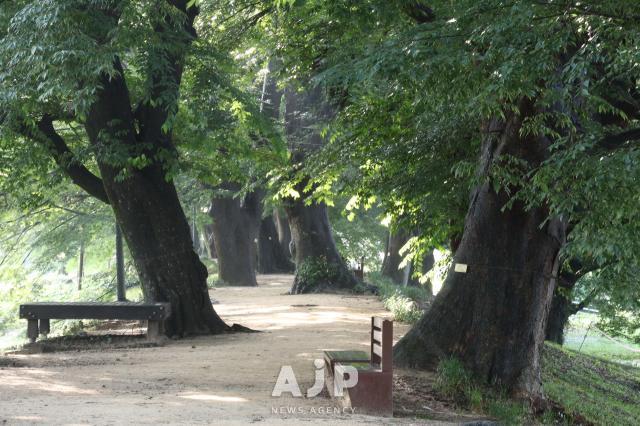
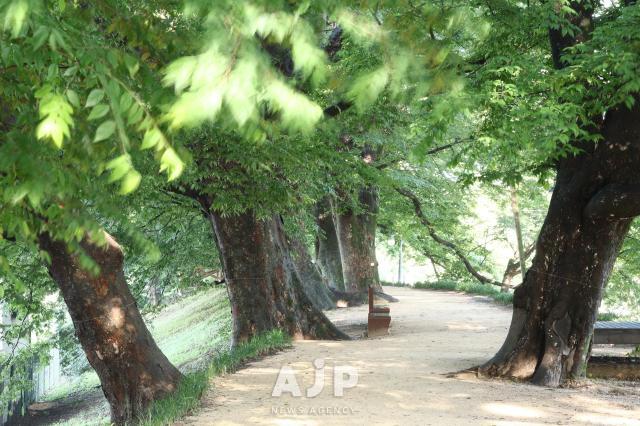
◇ Gwanbangjerim
Gwanbangjerim is a centuries-old forest planted along a levee. In 1648, during the reign of King Injo, the governor of Damyang ordered the construction of an embankment to prevent flooding from the Damyangcheon Stream. Trees were planted along the levee, and the forest was expanded again in 1854. The name “Gwanbangjerim” comes from its origins — a forest planted by the government.
Today, 176 trees here are officially protected, each marked with a numbered tag from 1 to 176. The main species include zelkovas, hackberries, maples, and Korean elms. With trunk circumferences exceeding 5 meters and crowns spreading over 10 meters wide, the old-growth trees create a powerful presence. The 1.2-kilometer forest walk has been designated a Natural Monument.
The most common species is the Pouzolzia tree, native to Korea’s southern regions and often planted to shield land from wind or sea storms. During levee renovations in the 1980s, Damyang added about 200 younger trees as successors.
Gwanbangjerim is not just a tourist spot — it is part of daily life for locals. Morning walkers and joggers are a common sight. At the forest entrance lies a well-known noodle alley, where visitors can sit on the levee and enjoy a bowl of cold noodles in the breeze, a tradition dating back to when the nearby bamboo goods market thrived.
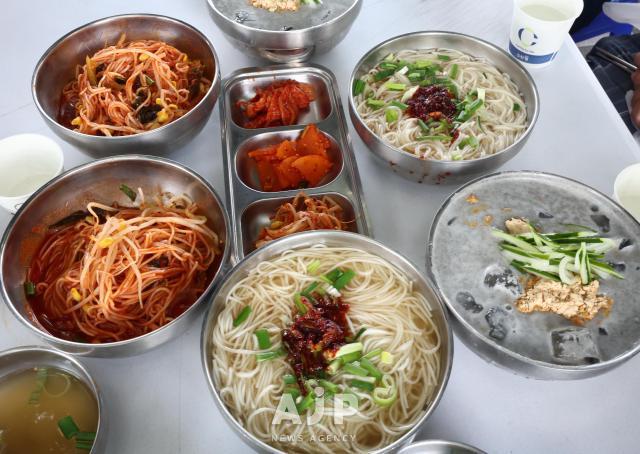
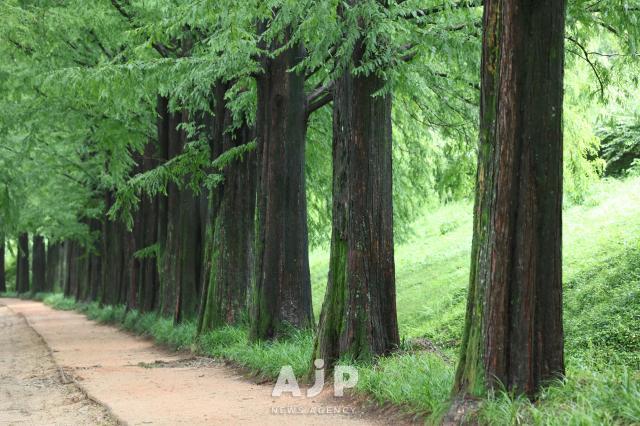
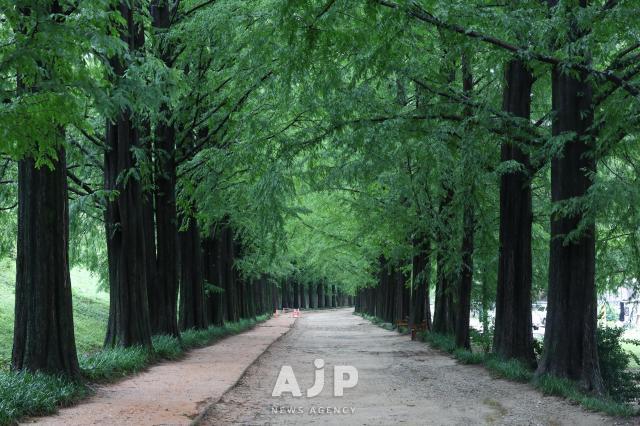
◇Metasequoia Road
The rain had just stopped when we arrived at Metasequoia Road. Lining both sides of the path, 20 to 30-meter-tall trees glistened with moisture, their green hues intensified. Some visitors walked barefoot along the red earth trail next to the main path. The long stretch of straight road, flanked by these towering trees, offers a feeling of both awe and stillness.
Damyang’s streets are lined with metasequoia trees because, in 1972, about 4,700 were planted along key local roads. In 2000, however, a national highway expansion project threatened to destroy many of them. Locals rallied to preserve the trees, arguing they were not just decorative but part of Damyang’s natural heritage.
Thanks to those efforts, a 2-kilometer stretch between Hakdonggyo and Geumwolgyo bridges was preserved as a pedestrian-only road. Today, 487 metasequoias, each about 27 meters tall and over 50 years old, form a green tunnel that has become one of Korea’s most iconic tree-lined paths.

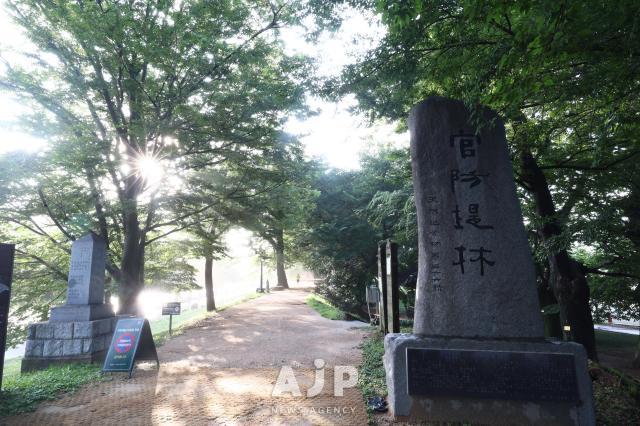
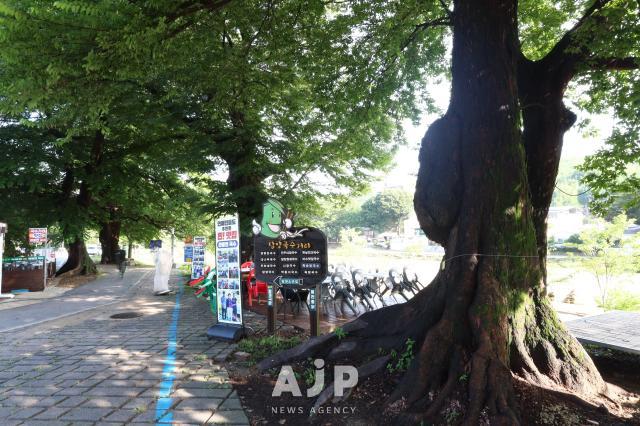

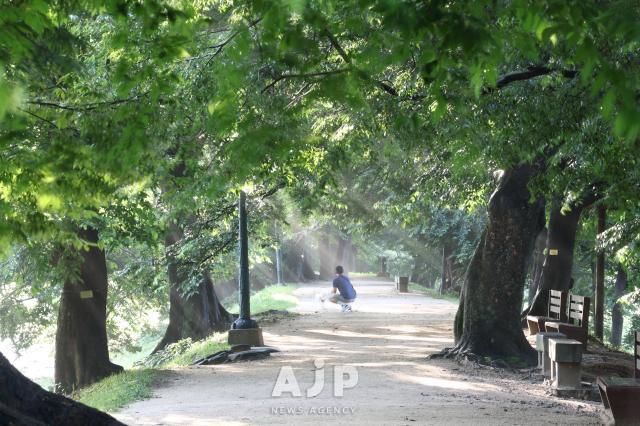
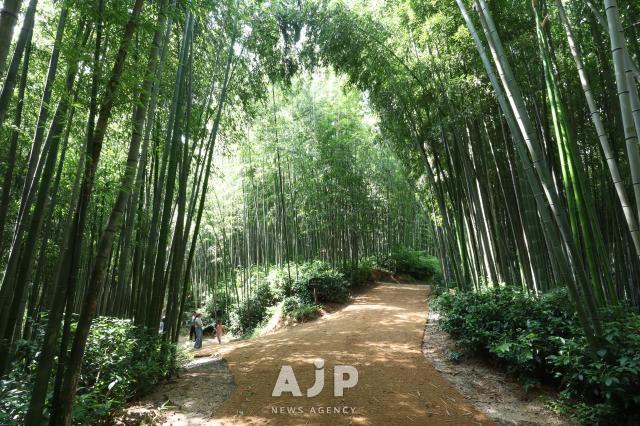
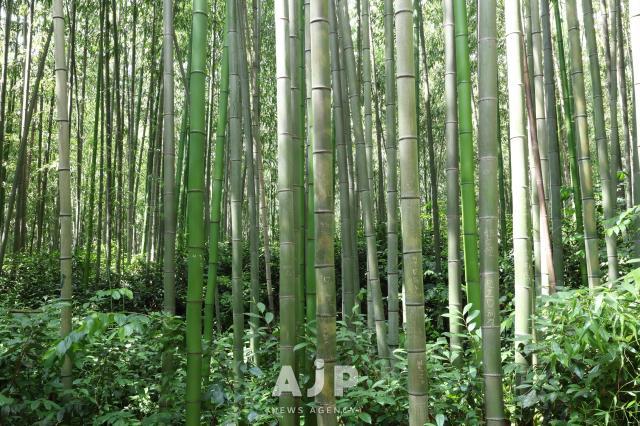
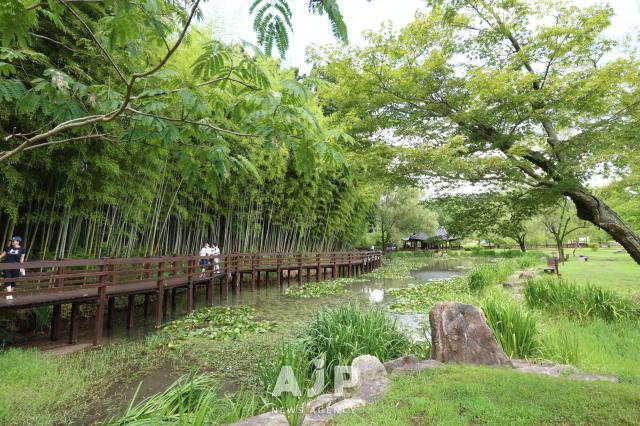
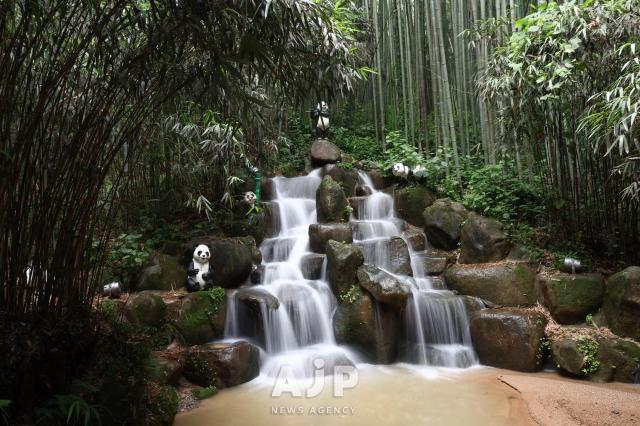

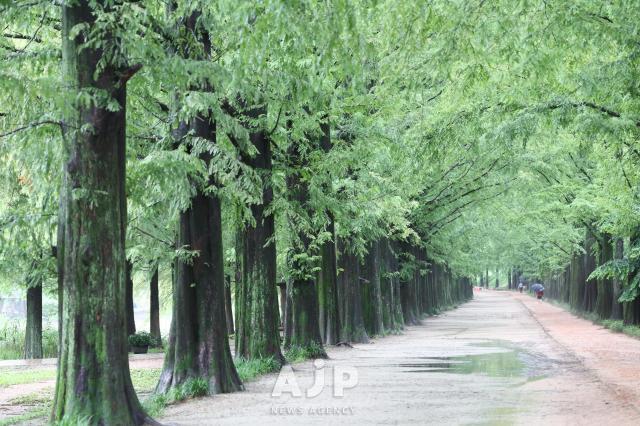
Copyright ⓒ Aju Press All rights reserved.


